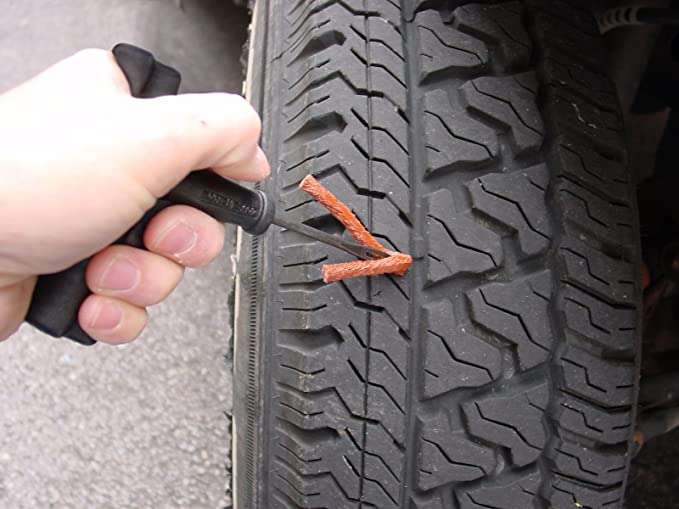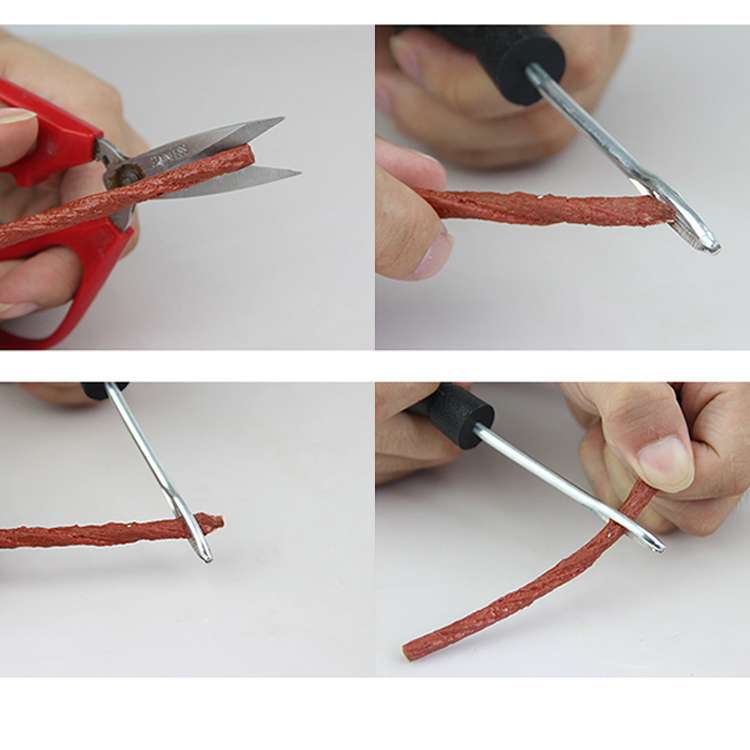

How to Repair a Punctured Tire
1.Locate the tire that is losing air. Remove your valve caps first. You can either find the hole by looking for the nail that is pierced through the tire, or you can put the tire in a tub of water and roll it around in driving rotation. There should be air bubbles where the hole is.
2.Take the tire off from the rim. This allows the puncture to be easily accessed.
3.Remove anything that's in the tire. If you have found the hole, and there is a nail punctured through it, use your pliers. Grab from the threading of the nail and lift out the nail. Mark the hole with tire chalk for easy access.
4.Once the hole is clear, squirt some buffering solution over the puncture. This allows the buffer to work effectively and leave you with a smooth surface.
5.Grab your buffer machine. Make sure that you have a sanding pad surface on your buffer to get a smooth surface. Buff all around the punctured area in a circular motion to make sure you get everywhere you need.
6.Use a Tire Radial Patch. You can start by first removing the sticky pads of the inner side of the Radial Patch. Then from the inside of the tire, you can stick the Radial Patch through the hole about halfway with the aluminum side first.
7.Spread the Tire Chemical Care (Seal Fast B-133). Using the brush at the end of the cap, spread the liquid material all around the Radial Patch string as shown in the picture.
8.Pull the rest of the Radial Patch through the tire. You must pull all the way through until the patch completely sits on the inner side of the tire, and the aluminum piece comes out of the rubber.
9.Cut the long leftover end of the patch using your cutting pliers. Scissors will work too. As shown in the picture, you want to cut as low as you can.
10.Roll over the patch. Using your Tire Retread and Repair Tool, run over the Radial Patch from the inside of the tire. You can roll it in any direction, as long as you make sure to get every spot of the patch. Once the steps have been completed, your tire is ready to hit me back on the rims and filled to the pressure needed to be back on the road.


